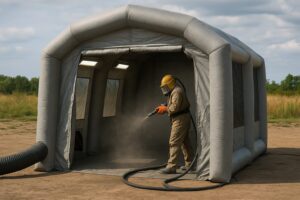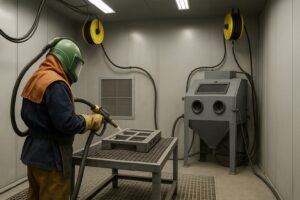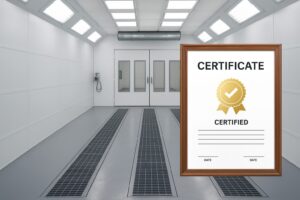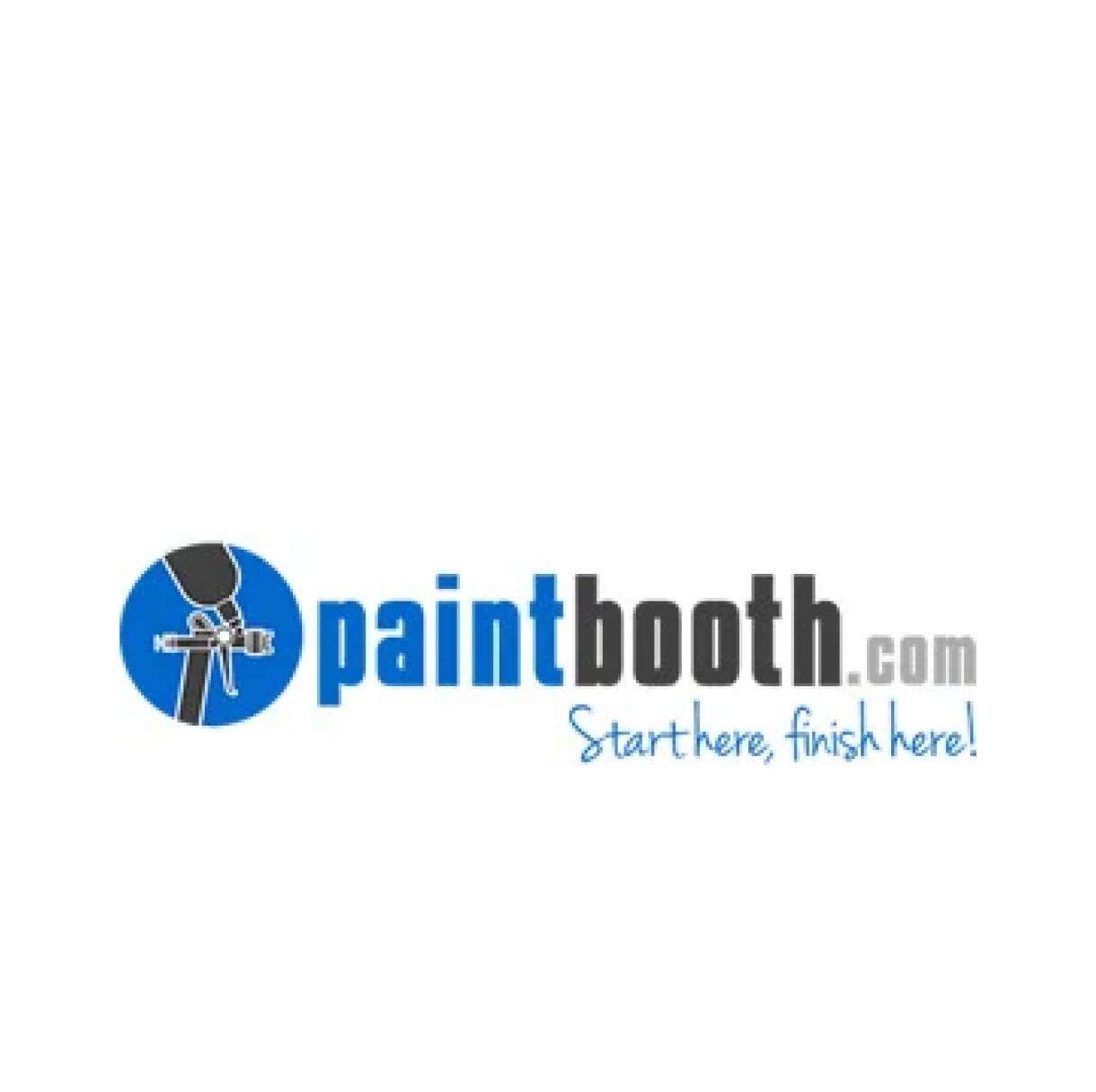When you walk into a sandblasting booth, you can feel the intensity of the operation right away. The sound, the pressure, the dust, it’s an environment that demands focus, precision, and most importantly, safety. One of the simplest yet most powerful tools to maintain safety in any sandblasting area is signage. Those signs and labels you see around the booth? They’re not just there to fill empty wall space—they play a critical role in keeping people informed, aware, and out of harm’s way.
Today, we’re going to break down the essential safety signage and labels that should be present in any properly equipped sandblasting booth. Whether you’re setting up a new booth or just making sure your current one meets standards, understanding these visual cues can make a big difference in overall safety.
Why Safety Signage Matters in Sandblasting
Sandblasting involves the use of high-pressure abrasive materials that can be dangerous when handled without proper precautions. Particles fly at high speeds, dust clouds can obscure visibility, and exposure to certain materials can cause health issues if not controlled. With all this in mind, workers need constant reminders and visual cues about what’s safe, what’s not, and what protective measures must be followed.
That’s where safety signs and labels come in. They communicate vital information quickly and clearly. A single sign can mean the difference between a safe shift and a serious accident. It’s all about giving people the information they need before something goes wrong.
Key Types of Required Signage
Now let’s walk through the types of signage and labels you’ll commonly find—or should find inside and around a sandblasting booth.
1. Hazard Warnings
These are among the most critical signs. They alert workers to the specific dangers inside the booth, such as:
- High-pressure equipment in use
- Abrasive blasting in progress
- Do not enter while the booth is operational
- Hearing protection required
- Respiratory protection must be worn
These signs are typically bold, with bright yellow or red backgrounds and large text. Icons like an exclamation point, a skull and crossbones, or a dust mask help communicate the message even if someone’s not reading every word.
Hazard warnings should be placed on the booth doors, around any control panels, and at eye level near entrances to ensure visibility before anyone steps inside.
2. PPE Requirement Signs
PPE (Personal Protective Equipment) signs are all about reminding workers what gear is non-negotiable before starting work. In a sandblasting booth, this often includes:
- Protective overalls or suits
- Heavy-duty gloves
- Blast helmets or full-face shields with an air supply
- Steel-toe boots
- Respiratory protection systems
Hearing protection
You’ll often see signs that say “No Entry Without PPE” or “PPE Required Beyond This Point.” These aren’t just suggestions, they’re backed by OSHA and workplace safety standards. Keeping them clearly posted helps enforce compliance and protect everyone’s health and safety.
3. Emergency Exit and First Aid Signs
Even in a small booth, knowing how to get out in an emergency is essential. Clear signage pointing to exits, fire extinguishers, eye wash stations, and first aid kits can be lifesaving in a high-stress moment.
Make sure:
- Exit routes are well-lit and marked with “EXIT” signs
- First aid kits and eyewash stations are labeled with bright green and white signs
- Fire extinguisher locations are clearly marked and unobstructed
These signs should be easily visible even when visibility in the booth is low—during a dust-heavy session or power outage, for example.
4. Operational Instructions and Labels
Operational signage includes posted procedures that guide workers through the safe use of the equipment. For instance:
- Start-up and shut-down instructions
- Steps for properly depressurizing the system
- Maintenance schedule
- Blast media usage guidelines
Labels on machinery can include warnings like “Do Not Open While In Operation” or “Caution: Moving Parts.” These reminders are small but powerful—they guide workers through every step and minimize the risk of costly mistakes or injuries.
5. No Unauthorized Access Signs
Sandblasting booths should never be accessible to unauthorized personnel. Signs like “Authorized Personnel Only” or “Restricted Area” reinforce that message and help control who can come near the equipment.
This is especially important in facilities with multiple departments. A clear sign can stop a curious passerby or an untrained employee from wandering into a high-risk zone.
Choosing the Right Sign Materials
It’s not just about the message—the material of the signage matters too. In sandblasting environments, signs need to stand up to dust, moisture, and potential impacts. That’s why most companies choose:
- Durable plastic or aluminum signs
- UV and chemical-resistant coatings
- Reflective surfaces for visibility in low light
- Labels on equipment should be laminated or printed on heavy-duty adhesives that won’t peel or fade easily.
Keeping Signage Up to Date
Signage isn’t a “set it and forget it” task. As your booth setup changes, your signs may need updates, too. New equipment, updated safety protocols, or even a change in the type of blast media used can all call for new warnings and labels. Schedule routine safety inspections to make sure everything is still accurate, visible, and in good condition.
It’s also smart to engage your team. Ask them if the signs are helpful. Are they easy to see? Easy to understand? Workers on the ground often have the best feedback when it comes to signage effectiveness.
Final Thoughts
Safety signage might not be the flashiest part of running a sandblasting booth, but it’s definitely one of the most essential. These signs act like silent supervisors, always there, always watching, always guiding workers toward the safest possible outcome.
Whether you’re setting up your first booth or just tightening up your current safety protocols, investing time and attention into proper signage is a smart move. It protects your people, your equipment, and your peace of mind.




